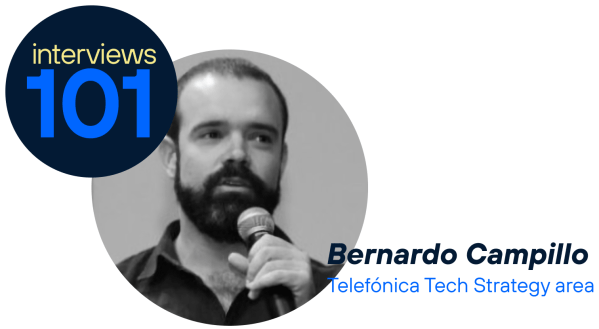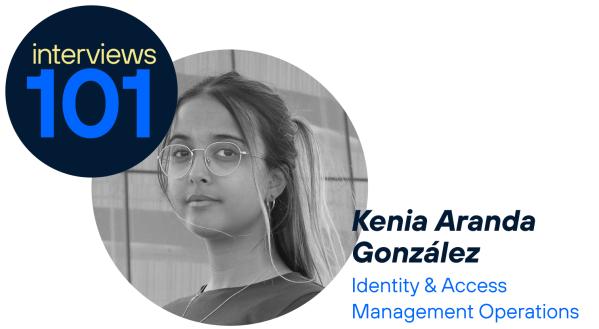Tell us a little about yourself. What does your job at Telefónica involve?
I have 19 years of experience at Telefónica, where I have worked in various areas such as Marketing, Customer Experience and Channel Development. In 2018, I began a career transition into the area of Artificial Intelligence, focusing on how AI can transform the way we relate to customers and optimise business processes.
I currently lead the artificial intelligence product discovery area at Vivo, where my team is responsible for identifying needs within the company that can benefit from the use of AI, designing solutions, calculating their impact and prioritising projects. We focus on the initial phase of the AI product lifecycle, from conceptualisation to technical and business validation, before transferring developments to the delivery teams.
Today we manage a backlog of more than 100 initiatives, ranging from process automation to advanced solutions with generative AI. Our goal is to ensure that artificial intelligence is implemented strategically, efficiently and with real impact on the business.
How do you see the evolution of artificial intelligence?
At Vivo, artificial intelligence has been present long before the generative AI boom. Since 2018, with the development and evolution of Aura, we have built up a high level of specialisation in natural language processing (NLP) within our team. Thanks to this experience, we began to experiment with the GPT-3 model while it was still in its preview phase, which allowed us to be at the forefront and follow the explosion of generative AI closely.
Before the arrival of models like ChatGPT, AI was mainly concentrated in companies, working in the background to optimise processes, such as recommending titles on Netflix or books on Amazon. People were impacted by AI, but they did not actively use it to their advantage.
Now, with generative AI, artificial intelligence is truly in the hands of the people. It has become a tool of augmented intelligence, enhancing creativity, productivity and day-to-day decision-making. This change represents a new phase in the evolution of AI: from a business technology to a tool accessible to everyone.
I see the trend continuing in: first, improved personalisation and adaptability of models to specific contexts; greater efficiency in terms of computational cost, which will allow for even more widespread use; and AI agents will increasingly see autonomous agents specialised in executing complex tasks without human intervention. These agents will not only answer questions, but will also be able to interact with systems, automate processes and make strategic decisions, changing the way we work and manage businesses.
What improvements can we expect to see in future versions compared to the current ones?
Some key improvements that we will see in the next versions of AI models include:
- Greater accuracy and less hallucination – More reliable models, with a better understanding of context and the generation of more accurate responses.
- Lower resource consumption – More efficient algorithms that will require less computational power, allowing them to be used in smaller devices.
- Greater multimodal capacity – Seamless integration of text, images, video and voice in a single model.
- AI – Models that not only generate information but also perform complex tasks with less human intervention.
What challenges does AI face?
AI faces multiple challenges, but the most relevant today are:
- Ethics and bias – Preventing models from reinforcing existing biases in the data.
- Transparency and explainability – Ensuring that AI decisions are understandable to users and regulators.
- Regulation – Balancing innovation with regulations that protect people without holding back development.
- Security and privacy – Ensuring that AI handles sensitive data responsibly and securely.
How can the ethical and responsible development of artificial intelligence be guaranteed?
At Telefónica, we make responsible use of technology and, specifically, we use Artificial Intelligence with an ethical and responsible approach. We have Ethical AI principles by which we are committed to using AI in a fair, transparent and explainable way, centred on people, with privacy and security by design and throughout the AI value chain, including partners and third parties. And all this also includes Generative Artificial Intelligence.
In addition, we have an Ethical AI Committee to which we can escalate high-risk uses of this type of technology and a group of RAI Champions (Responsible Artificial Intelligence Champions) who ensure the responsible use of Artificial Intelligence in the business areas. We have approved an internal AI governance regulation in anticipation of the new European regulation (‘AI Act’).
To promote the responsible use of generative AI among our employees, Telefónica has published an internal guide on how to use generative AI in everyday life, covering aspects such as data privacy, security, confidentiality of information, intellectual property, transparency and ethics. With regard to security, in accordance with the Global Security Regulations, the use of Internet services, such as ChatGPT, to process or store company information is not permitted, unless the user accounts and services are contracted and/or controlled directly or indirectly by Telefónica. We are also exploring the use of generative AI tools in corporate environments controlled by Telefónica that offer adequate guarantees of privacy and information security and prevent unauthorised access by third parties.
On the other hand, we carry out different training and awareness activities for our employees, for example, through Universitas, our corporate university, where we train employees on the potential of Generative AI tools and also on the responsibility that it entails and transmitting a series of recommendations. We also have an online course on ethical AI that thousands of employees have already taken.
What are the implications of artificial intelligence models being open source?
Open source artificial intelligence models have significant advantages, especially in terms of size, cost and autonomy. Being accessible, they allow for greater flexibility in customisation and reduce dependence on large companies, which can be a Open-source artificial intelligence models have significant advantages, especially in terms of size, cost and autonomy. Being accessible, they allow for greater flexibility in customisation and reduce dependence on large companies, which can be a key strategic factor for many organisations. However, I don’t believe that the future of AI depends exclusively on open or closed models, but rather that we will see a coexistence of both options, where the choice will depend on the specific use case.
On the one hand, open-source models can represent a considerable reduction in costs, eliminating the need to pay for licences, as well as providing greater autonomy to customise and train models without depending on providers such as OpenAI, Google or Anthropic. They also offer greater control over data and deployment, which is essential in scenarios with specific privacy and security requirements.
However, their implementation also brings challenges. Depending on the use case, open models may not be the best option when low latency is required, as their operation usually demands a robust computational infrastructure with access to specialised GPUs.
They also require more effort in terms of prompt engineering and security mechanisms. Unlike commercial models such as GPT, which have native guardrails and continuous evolution funded by companies such as Microsoft and OpenAI, open models require additional work to guarantee security, response control and risk mitigation.
The choice between open source and proprietary models must be evaluated on a case-by-case basis. In applications where personalisation, control and cost reduction are priorities, open models can be an excellent alternative. However, for solutions that demand robustness, integrated security and constant optimisation, paid models will continue to offer important strategic advantages.
Who do you consider to be an excellent employee at Telefónica?
Bruno Ferreira Vieira.












